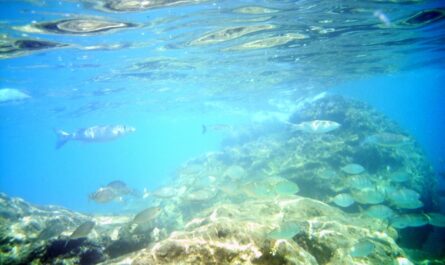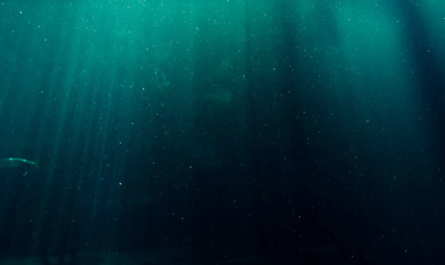The ocean is often described as the Earth’s largest reservoir of life and a critical buffer against climate change. Deep-sea ecosystems, especially in the Atlantic, have emerged as powerful allies in our fight against global warming. These ecosystems, from deep coral reefs to mysterious hydrothermal vents, play essential roles in carbon cycling, nutrient distribution, and biodiversity support. As scientists and policymakers seek innovative ways to mitigate climate change, understanding and harnessing the potential of these deep-sea environments becomes increasingly important.
Unveiling the Deep-Sea World
Deep-sea ecosystems refer to the complex habitats located far beneath the ocean’s surface, typically below 200 meters where sunlight cannot penetrate. The Atlantic Ocean, with its diverse bathymetry, hosts a myriad of deep-sea communities. These include cold-water coral reefs, abyssal plains, seamounts, and hydrothermal vent communities, each contributing uniquely to ocean health and climate regulation. Unlike coastal areas, these deep habitats are less affected by human activities such as fishing and coastal development, allowing them to maintain relatively pristine conditions. However, they are not immune to the impacts of climate change, and their role in sequestering carbon and sustaining biodiversity has come under intense scientific scrutiny.
The Role of Deep-Sea Ecosystems in Carbon Sequestration
One of the most promising aspects of deep-sea ecosystems is their potential to sequester carbon. In these environments, carbon is captured through processes like the sinking of organic matter from the surface, known as the biological pump. Phytoplankton in the sunlit upper layers of the ocean absorb carbon dioxide during photosynthesis. When these organisms die, they sink to the deep ocean, where the carbon they contain can be stored for centuries or even millennia. This natural mechanism effectively removes carbon dioxide from the atmosphere, contributing to the regulation of Earth’s climate.
Deep-sea sediments, especially those on the Atlantic seafloor, serve as significant carbon sinks. They trap and lock away carbon in forms that are less likely to re-enter the atmosphere. Recent research suggests that protecting and possibly enhancing these natural processes could play a vital role in climate change mitigation. By reducing the amount of carbon dioxide in the atmosphere, deep-sea carbon sequestration helps to moderate global temperatures and mitigate extreme weather patterns.
Biodiversity and Resilience in the Deep
The biodiversity found in deep-sea ecosystems is staggering. Many species residing in the Atlantic’s depths are yet to be discovered, and those that have been studied often display extraordinary adaptations to their dark, high-pressure environments. These organisms form intricate food webs that are tightly interconnected. The resilience of these ecosystems lies in their diversity; a wide variety of species ensures that ecological functions are maintained even if one component is disturbed.
Biodiversity in the deep sea also underpins the ecosystem’s ability to respond to environmental changes, including those induced by climate change. Some deep-sea species have mechanisms to cope with variations in temperature, acidity, and oxygen levels, making them crucial players in the ocean’s long-term stability. This adaptability might offer clues to how marine life could evolve in response to rapid climate shifts, potentially guiding conservation strategies both in the deep sea and in more accessible marine environments.
Hydrothermal Vents and Their Unique Contributions
Among the most fascinating deep-sea ecosystems are hydrothermal vent communities. Found along mid-ocean ridges and underwater volcanic regions in the Atlantic, these vents spew mineral-rich, superheated water into the cold ocean. Despite the extreme conditions, these vents support vibrant communities of organisms, including unique species of tube worms, clams, and bacteria that thrive on chemosynthesis rather than photosynthesis.
Chemosynthetic bacteria form the base of the food chain around hydrothermal vents by converting the chemicals in vent fluids into organic matter. This process not only sustains life in these isolated areas but also contributes to the broader oceanic carbon cycle. By converting inorganic compounds into biomass, these bacteria play an integral role in sequestering carbon and supporting complex ecosystems that may indirectly help mitigate climate change.
Implications for Climate Change Mitigation Strategies
Understanding the functions of deep-sea ecosystems opens up new avenues for climate change mitigation. Researchers are exploring ways to enhance natural carbon sequestration processes in the ocean. This includes the possibility of stimulating phytoplankton blooms in surface waters or protecting areas of the deep seafloor to preserve their carbon storage capacity. The conservation of these ecosystems is also crucial; any disturbance—whether from deep-sea mining, bottom trawling, or other extractive activities—could compromise their ability to function as effective carbon sinks.
Furthermore, deep-sea ecosystems may serve as natural laboratories for developing innovative strategies to combat climate change. For instance, studying how organisms at hydrothermal vents manage to thrive in harsh conditions might inspire bioengineering solutions to improve energy efficiency or develop new materials that mimic their resilience. The potential for biotechnology derived from these organisms could lead to breakthroughs not only in environmental science but also in medicine and industry.
Challenges in Deep-Sea Research and Conservation
Despite their importance, deep-sea ecosystems remain among the least understood on Earth. The challenges associated with studying these remote and extreme environments are considerable. Specialized equipment, such as remotely operated vehicles (ROVs) and deep-sea submersibles, is required to explore these depths. Moreover, the harsh conditions of the deep sea—extreme pressure, darkness, and low temperatures—complicate both research efforts and the interpretation of data.
Human activities pose additional risks. Deep-sea mining, for instance, has raised concerns about the potential for significant ecological disruption. The extraction of valuable minerals from the ocean floor could damage fragile ecosystems that have taken millennia to develop. Consequently, there is a growing call for international regulations and protective measures that balance economic interests with environmental preservation.
Policy and International Cooperation
Effective conservation of deep-sea ecosystems in the Atlantic requires coordinated policy efforts and international cooperation. The vastness of the Atlantic Ocean means that no single nation can claim responsibility for its entire deep-sea environment. Collaborative frameworks, such as those established by the United Nations Convention on the Law of the Sea (UNCLOS), are critical in creating guidelines for sustainable use and protection of marine resources.
Recent international summits have emphasized the need for a global response to protect deep-sea environments from the twin threats of overexploitation and climate change. Policymakers are now increasingly aware that preserving these natural carbon sinks is not just a matter of environmental stewardship but also a strategic imperative in the global fight against climate change. Investments in research, monitoring, and enforcement of protective measures are essential to ensure that the Atlantic’s deep-sea ecosystems continue to provide invaluable services to the planet.
Integrating Deep-Sea Ecosystem Research with Climate Models
As climate change accelerates, integrating the dynamics of deep-sea ecosystems into global climate models becomes ever more crucial. Current climate models often overlook the complex processes occurring in the deep ocean. However, as new data emerges, scientists are working to refine these models to better account for the role of deep-sea carbon sequestration and nutrient cycling.
Enhanced models could provide more accurate predictions of how climate change will progress, offering insights into the feedback loops that drive atmospheric changes. For example, understanding how the deep ocean absorbs and stores carbon can help refine estimates of future atmospheric CO₂ concentrations. This knowledge is instrumental in shaping both mitigation strategies and adaptation measures. As models improve, they will better inform policy decisions, ensuring that efforts to combat climate change are grounded in a comprehensive understanding of Earth’s interconnected systems.
Innovative Research Techniques and Technologies
The study of deep-sea ecosystems has been transformed by technological advancements. Modern exploration relies on sophisticated tools such as autonomous underwater vehicles (AUVs), advanced sonar imaging, and high-resolution satellite mapping. These technologies have enabled researchers to gather data from the deepest parts of the Atlantic with unprecedented precision.
One of the most promising developments is the use of environmental DNA (eDNA) sampling. This technique allows scientists to detect genetic material shed by organisms, offering a non-invasive way to assess biodiversity and monitor ecosystem health. The application of eDNA in deep-sea research has already led to the discovery of previously unknown species and provided critical insights into the distribution of life in these remote habitats.
Data collected from these innovative methods are vital not only for academic research but also for practical conservation efforts. By mapping biodiversity hotspots and identifying key areas of carbon sequestration, scientists can advise governments and international bodies on where to focus protection efforts. In turn, these informed decisions can help ensure that deep-sea ecosystems continue to thrive and contribute to climate regulation.
The Future of Deep-Sea Conservation
Looking ahead, the future of deep-sea conservation hinges on the delicate balance between exploration and exploitation. While the potential economic benefits of deep-sea mining and resource extraction are tempting, they must be weighed against the long-term environmental costs. The preservation of these ecosystems is a critical investment in the planet’s future—a natural safeguard against the accelerating impacts of climate change.
Innovative policy frameworks and sustainable practices will be necessary to navigate this complex landscape. Integrating scientific research with robust environmental regulations can help create a model where economic development does not come at the expense of ecological integrity. Public awareness and education about the importance of deep-sea ecosystems are also essential. When communities understand the value of these hidden worlds, they are more likely to support initiatives aimed at protecting them.
Conclusion
Deep-sea ecosystems in the Atlantic are more than just mysterious and unexplored environments; they are active participants in the Earth’s climate system. Through carbon sequestration, biodiversity maintenance, and nutrient cycling, these deep habitats offer powerful natural mechanisms to combat climate change. However, their preservation is under threat from human activities and the broader impacts of global warming.
Protecting these ecosystems requires a multidisciplinary approach that spans cutting-edge research, technological innovation, international policy, and public engagement. As we continue to explore the depths of the Atlantic, each discovery offers not only a glimpse into an alien world but also a potential key to solving one of the greatest challenges of our time. The integration of deep-sea science into climate change mitigation strategies could prove transformative, ensuring that the vast, dark expanses of our oceans serve as vital allies in securing a sustainable future for the planet.
Advancing our understanding of these underwater frontiers will demand sustained investment, international cooperation, and a commitment to safeguarding our natural heritage. With the collective efforts of scientists, policymakers, and communities worldwide, the deep-sea ecosystems of the Atlantic may soon emerge as unexpected heroes in the battle against climate change.
Deep-sea exploration not only enriches our scientific knowledge but also deepens our appreciation for the intricate connections that sustain life on Earth. As we stand at the crossroads of environmental uncertainty, the preservation and study of these deep ecosystems represent a beacon of hope—a reminder that nature, in its most hidden corners, holds the secrets to healing our troubled planet.



